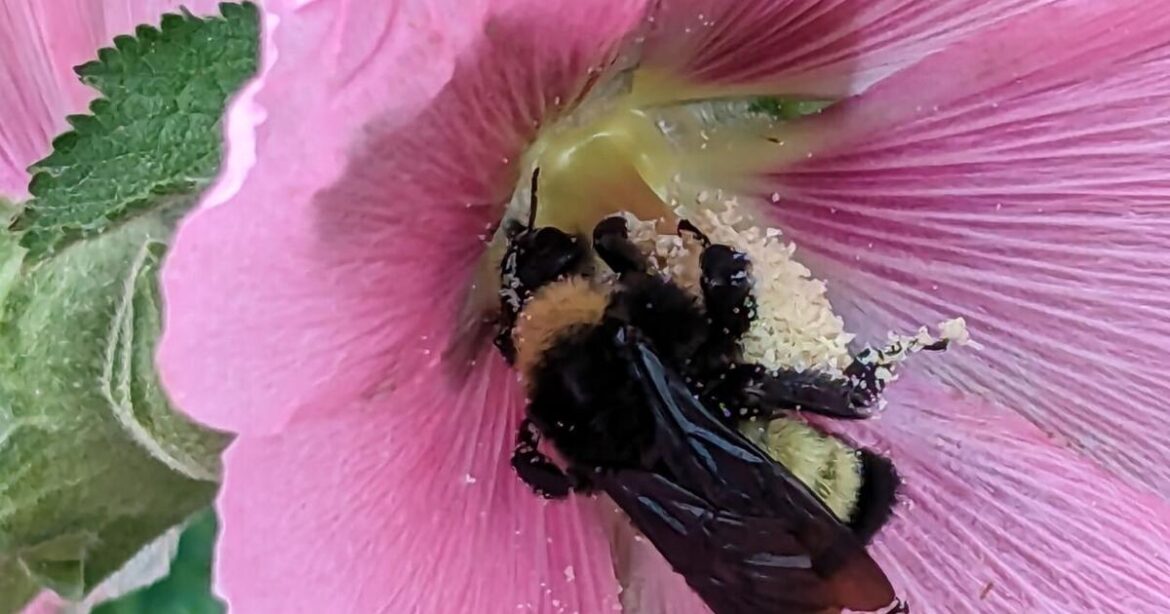When talking about the birds and the bees of plant reproduction, the stork is not making the delivery.
From a scientific standpoint, the process of pollination is complex, involving different types of pollination and pollinators, varying plant structures and perfect timing. Dr. Emily Stine, Nebraska Extension educator based in Scottsbluff, has a more basic definition.
“Pollination is literally just the genetic exchange of information between plants,” she said during the Gardening Back to the Basics class about Pollination and Reproduction.
Some plants, including ferns and mosses, engage in spore-driven fertilization. Others are at the mercy of where the wind blows. The height of allergy season is the peak pollination time for many wind-driven pollinators, including many trees and flowering plants.
In the garden, pollination is largely carried out by insects that move pollen from flower to flower.
“Usually, plants will use a reward system to encourage insects to come to them,” Stine said.
Aromatic flowers intentionally attract insects, and the sweet nectar flowers provide acts as the reward. Stine explained that the nectar depositories are often tucked behind the flower’s reproductive parts involved in fertilization.
When you think of flowers, images of roses, tulips or lilies often come to mind. These are examples of perfect flowers. They are “perfect” because they contain both the female and male gametes and can thereby asexually reproduce, whereas “imperfect” flowers lack one or more parts.
Poor pollination greatly affected sweet corn yields last summer.
Submitted photo by Kristen Sindelar
“Perfect flowers are capable of self-pollinating because it’s all in one package,” said Stine.
The vibrant, showy petals of a flower attract pollinators and act as a landing pad for them to assist with pollination. The stamen is the male gametes, which includes the anther to produce pollen and the filament to hold the anther. The pistil, comprising of the stigma, style and ovary, is the female gametes.
People are also reading…
Pollen is received by the stigma and transported down the style, a tube connecting the stigma to the ovary. Inside of the ovary is the ovule, or eggs that become seeds once fertilized.
“All the individual genetic DNA is transmitted into the ovules where cell reproduction happens,” Stine said.
Many vegetable plants have imperfect flowers. To understand how they reproduce, it’s important to distinguish the two types: monoecious and dioecious.
Monoecious plants contain both male and female flowers on the same plant. Tomatoes, squash, corn, cucumbers and many other vegetables are monoecious, as are trees such as oak and birch.
Dioecious plants have only male or female reproductive organs. Holly shrubs, gingko trees, red cedars and asparagus are dioecious. You may need two or more plants to achieve pollination.
“This influences our landscaping choices,” said Stine.
For example, you would plant one male holly shrub to every seven female shrubs for best fruit set.
Be aware that cross-pollination is possible between certain families. Summer squash varieties placed within the same vicinity can generate unexpected hybrids, as can pumpkins planted near butternut squash. Stine said that you will not have a pumpkin-watermelon cross, though.
“The pollen that lands is not able to germinate to the ovary,” she said.
If flowers are setting on your plants but no fruit is forming, low pollination is a probable cause. You may need to pollinate the flowers yourself, especially if pollinators are not frequenting your garden. Cotton swabs are typically the tool of choice to transfer pollen from a male to a female flower, but Stine prefers to replicate the vibration power of bees with an electric toothbrush. She has done this for pepper and tomato plants.
“You can use the back or cut off the bristles,” Stine said, also advising that the toothbrush be used only for this purpose and not to brush your teeth.
Clearly, pollination truly does rely on the birds and the bees, as well as insects, to fulfill plant reproduction. They are working so you can take the time to stop and smell the roses, or whatever perfect or imperfect flower is growing in your backyard.
Reporter Kristen Sindelar has loved agriculture her entire life, coming from a diversified farm with three generations working side-by-side in northeastern Nebraska. Reach her at Kristen.Sindelar@midwestmessenger.com.
Be the first to know
Get local news delivered to your inbox!

